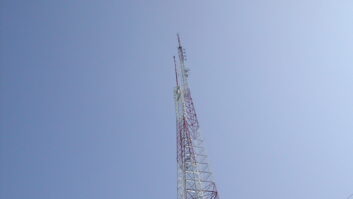
Jeff Keith is senior product design engineer for Wheatstone Corp. This is one in a series of Q&As with industry professionals about their presentations at the upcoming NAB Show in Las Vegas.
Radio World: You’ll be presenting a paper in the Advanced Radio Technology session called, “The Curious Behavior of Consumer FM Receivers During Overmodulation” (Sunday, April 12 10:30–11 a.m.). What is it about?
Jeff Keith: I detail my findings on how FM radios, especially the more recent ones, react when tuned to stations using modulation above 110%.
RW: But 110% is the legal limit so why are stations really using modulation higher than that?
Keith: Many are. In the quest to win the market’s loudness war, some stations not only have the latest and greatest processor cranked to the max, they are also running their modulation well above the legal limit.
RW: Most modern transmitters are probably capable of higher modulation, so what could be the problem?
Keith: The back story is that over the last couple of years we’ve been seeing more and more cases where stations were complaining about being distorted, and they were blaming their previous on-air processing for that distortion. It was during field demos of our processors when the light bulb moment happened for me: whether or not a station sounded distorted had a lot more to do with the radios that we were using to judge the station’s quality and loudness, than did the settings on the processor! That’s what got me thinking and also what put my curiosity in gear.

RW: So the fault lies not with the station but it’s the listener’s radio that’s distorting?
Keith: Exactly. And this finding was a surprise.
As broadcasters we assume that the listening audience can capture and hear exactly what we are transmitting. But it turns out that that isn’t always the case. Our on-air signal might sound awesome coming out of our modulation monitor. And it probably sounds pretty good on some radios, too. But that same signal can sound absolutely horrendous on certain radios in our coverage area. And that creates a dilemma for the station as well as a question: how many listeners with lousy radios would like to listen to the station and can’t, or won’t, because it sounds so bad on their radio?
RW: How high does modulation need to be before a radio’s audio begins degrading?
Keith: My tests revealed that distortion in the newest radios rose quickly above 110% modulation, while the best radios reached that point at around 125%. That was good supporting evidence for the distortion problems encountered in the field which we can now attribute to two things: (1) modulation above 115% is known to cause distortion issues for an unknown percentage of listeners’ radios, and (2) many of the stations visited were modulating well above 130%.
RW: Do all radios have these issues, or just some, and do we know which ones they are?
Keith: The radios I tested, over 30, were carefully selected to represent what the general public would probably choose for casual FM listening. I didn’t measure audiophile-class receivers. In fact, two of the selection criteria were that a radio not cost more than $50 when it was new, and it had to be sold within the United States in the last 25 years.
As to which radios have issues, the overall findings showed that the newer the radio, the worse it behaved in the presence of elevated modulation. The best performing radios were those in automobiles, though they didn’t outrun the poorest radios by much of a margin.
RW: What should broadcasters do?
Keith: If I was still working as a chief engineer, knew about these findings, and our station was hell-bent on winning the loudness war, I would suggest to our PD that winning that war could have hidden costs. In fact I might even add some support for that suggestion with this:
For our station to have ratings, we need listeners. For listeners to listen long enough to be counted by the ratings service, they have to want to listen. If our signal sounds so bad on their radio that they choose to tune away, we haven’t won anything.
The bottom line is that the loudness war isn’t free. It probably never was. Today’s modern on-air processors can do wonders to create awesome audio at incredible loudness. But if listeners’ radios can’t cleanly demodulate that audio because our modulation is too high, they simply won’t listen.
RW: Is there anything else revealed in your presentation?
Keith: I cover the various receiver comparisons in much more detail, along with graphs for visual comparison. I also discuss some of the surprising findings about the inner workings of today’s highly integrated receiver ICs and how they affect audio quality. And finally, I reveal “station-side” technical issues related to elevated modulation that station engineers may not recognize or have considered.












